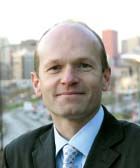Europe stands firm as U.S. healthcare sector falters
When the official attendance figures for the RSNA meeting are released in mid-January, they often provide a useful indicator of the economic state of the worldwide imaging industry.
When the official attendance figures for the RSNA meeting are released in mid-January, they often provide a useful indicator of the economic state of the worldwide imaging industry. A total of 56,824 people went to the congress last year, which represents 4% fewer attendees than in 2008. This suggests attendance at the Chicago event has peaked.
The official view is that the decline was largely due to cutbacks in the number of exhibitor and support personnel. But there were also fewer professional delegates: 26,262, compared with 27,586 in 2008.

There is great uncertainty in the U.S. as healthcare professionals and observers try to build up a clearer understanding of the implications of the Obama administration’s planned reforms. Along with the global recession, this has suppressed demand for imaging equipment and has had a considerable impact on the profitability of the major manufacturers and the pay packets of customers.
During the annual meeting of the Diagnostic Imaging (U.S.) editorial board, which is held during the congress, one advisor said he felt the radiological community was “dancing on the Titanic.”
“I fear we’re all going to sink! There’s a huge iceberg on the horizon comprising older people, who are soaking up more and more money and resources,” he warned. “We’ve got too much technology available to us right now, and we simply can’t keep building more toys. It’s all cool stuff, but we can’t afford and support it.”
Fortunately the situation appears less bleak in most European countries, particularly those with largely state-owned healthcare sectors. During the downturn, governments have sought to maintain levels of expenditure as part of a concerted effort to avoid a 1930s-type depression, and they have been reluctant to shelve major equipment purchases. The national breakdown of attendees at RSNA ,09 seems to confirm Europe’s relative well-being. An impressive 877 professionals came from France, and 771 were from Italy, 693 from the U.K., 684 from Germany, 423 from Spain, and 379 from the Netherlands.
Furthermore, 747 came from Japan, 553 from China, and 443 from Brazil. Just over 60% of professionals came from North America. The U.S. accounted for 14,376, Canada 1128, and Mexico 307, but they may soon be outnumbered by their international colleagues.
The multilingual greetings sign at the main entrance to McCormick Place underlines the growing importance of overseas delegates at the RSNA congress. Interestingly, the president of the 2010 meeting, Dr. Hedvig Hricak from Memorial Sloan-Kettering Cancer Center in New York, is Croatian-born. She did her medical and radiology training in the Zagreb before moving to the U.S. in 1972, and is very well-known in Europe.
I hope you enjoy our RSNA news coverage in this issue. Further reports will appear in the April edition, before our attention switches firmly to the European Congress of Radiology in the May issue. In the news section of this issue, you can read about Prof. Szczerbo-Trojanowska’s plans for ECR 2010, which will run from 4 to 8 March.
GE HealthCare Debuts AI-Powered Cardiac CT Device at ACC Conference
April 1st 2025Featuring enhanced low-dose image quality with motion-free images, the Revolution Vibe CT system reportedly facilitates improved diagnostic clarity for patients with conditions ranging from in-stent restenosis to atrial fibrillation.
The Reading Room Podcast: Current Perspectives on the Updated Appropriate Use Criteria for Brain PET
March 18th 2025In a new podcast, Satoshi Minoshima, M.D., Ph.D., and James Williams, Ph.D., share their insights on the recently updated appropriate use criteria for amyloid PET and tau PET in patients with mild cognitive impairment.